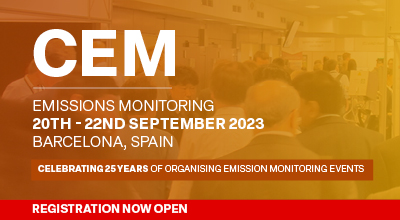| Abstract Title: | Evaluation of P-AMS for measuring HCl at the NPL stack simulator in order to meet the requirements of EN 1649:2021 (Instrumental Reference Method for HCl) under increasingly stringent emission limit values. |
| Presenter Name: | Mr Chris Dimopoulos |
| Co-authors: | Mr Linh Nguyen |
| Company/Organisation: | NPL |
| Country: | United Kingdom |
Abstract Information :
Previously, the HCl emission limit for industrial processes regulated under the Industrial Emissions Directive [2] was 10 mg.m-3. However, via BAT (Best Available Techniques) Conclusions documents the EU is bringing in increasingly stringent emissions limits impacting a range of industries, for example: 2-6 mg.m-3 for waste incineration [3], <1-3 mg.m-3 for iron and steel production [4], 3-12 mg.m-3 for power stations [5].
Under the Heroes Project (supported by EMPIR program, carried out in partnership with CMIa, EAb, Inerisc, VTTd), NPL assessed the performance of P-AMS for measuring HCl to extend the knowledge and evidence base of the performance of potable optical technologies at sub 10mg.m-3 and in line with BAT Conclusions AELs. We developed a test plan and evaluated different optical technologies (FTIR,NDIR and TDL) which were installed at the NPL stack simulator facility. Accredited testing laboratories were enlisted to operate the different systems.
We report the results of the intercomparison and an assessment on their performance and their ability to meet the uncertainty requirements of EN 1649:2021 under future stricter ELVs. EN 16429:2021 requirement is 20% of ELV or 1mg.m-3 for ELVs below 5mg.m-3. It was shown that uncertainty requirements at ELVs of 6mg.m-3 can be confidently met but not always at 5mg.m-3. A conservative 1.5mg.m-3 was found to be a reasonable absolute uncertainty to expect (non-Ferrous Metal Plants AEL - 1.5mg.m-3).
Other key conclusions derived was confirmation of the importance of the sampling system and a better overall performance of hot/wet systems as opposed to cold/dry systems and that the usage in the field of wet calibrators and their uncertainty needs to be characterised better.
(aCMI: Czech Metrology Institute, bEA: Environment Agency – UK, cIneris: French National Institute for Industrial Environment and Risks, dVTT Technical Research Centre of Finland)

